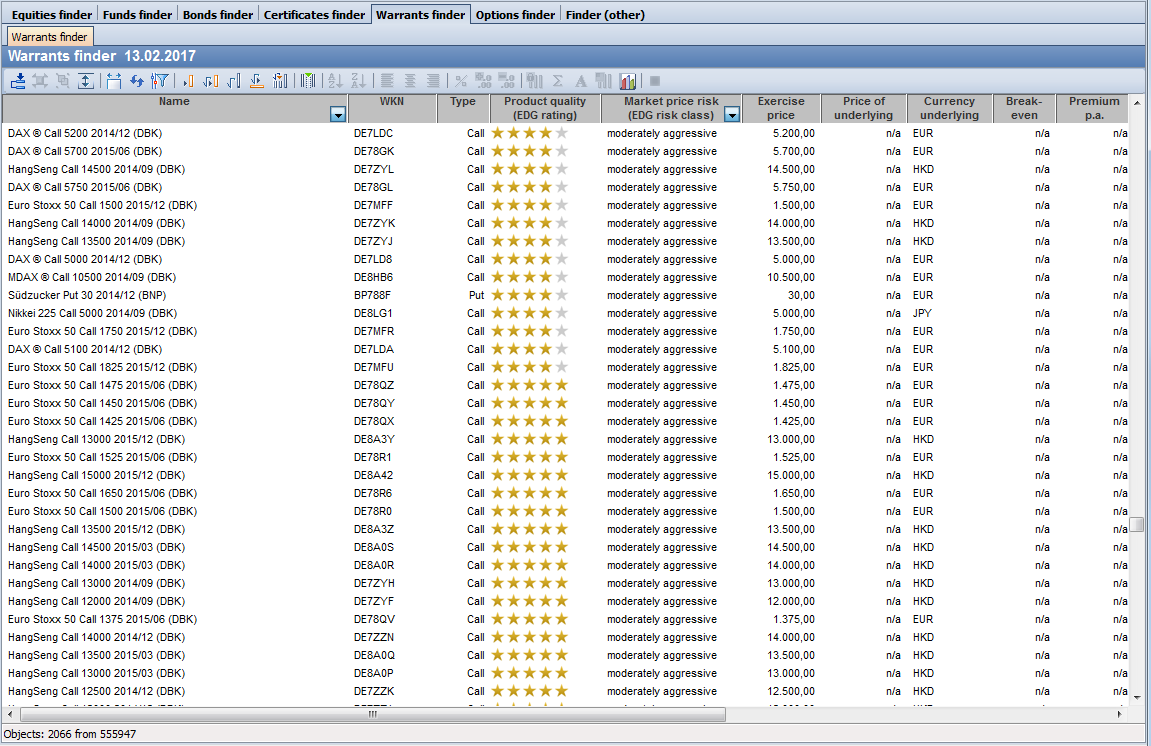Finder Warrants
The "Warrants Finder" is a table optimized for searching for warrants, which you can use to configure individual search queries via the filter settings. In open security finders, the "Warrants finder" is stored on the worksheet of the same name.


In detail, the "Finder Warrants" contains the following columns:
Column | Description |
|---|---|
Name | The name of the warrant. |
WKN | The WKN from the warrant's master data. |
Security no. | The Swiss security number from the warrant's master data. |
Type | The type of warrant, call or put. |
Product quality | The EDG rating (number of stars) of the warrant for the assigned risk class. The entry "n/a" symbolizes that there is no EDG rating for this warrant. If necessary, read the chapter EDG certificate rating. |
Market price risk | The EDG risk class assigned to the warrant. If necessary, read the chapter EDG certificate rating. |
Base price | The strike price of the warrant. The price agreed when concluding an option transaction at which the buyer can sell or buy the underlying asset again up to the option date (or on the exercise date) (also: Strike). |
Underlying price | The price of the underlying. |
Currency Underlying | The currency in which this underlying is quoted. |
Break-Even | The break-even point of the warrant. The break-even indicates the minimum or maximum price that the underlying asset must reach on the warrant's maturity date in order for the buyer of the warrant to make a profit by exercising it. |
Premium p. a. | The premium of the warrant, converted to one year in each case. This enables a better comparison of warrants with different maturities. The premium is the percentage by which the purchase of the underlying via the warrant is more expensive than the direct purchase via the stock exchange. The reverse is also true for puts. |
Remaining term [years] | The remaining term of the warrant in years. |
Moneyness | The moneyness of the warrant. The ratio describes the position of the current price of the warrant or the underlying compared to the strike price ("in the money" or "out of the money"). For example, a moneyness of 1.1 indicates a profit of 10%. This is shown in the column. |
Issuer | The issuer from the warrant's master data. |
Warrant type | The exact warrant type of the warrant, e.g. covered warrant, foreign warrant or certificate. |
You can use the parameters to select a different evaluation date.
